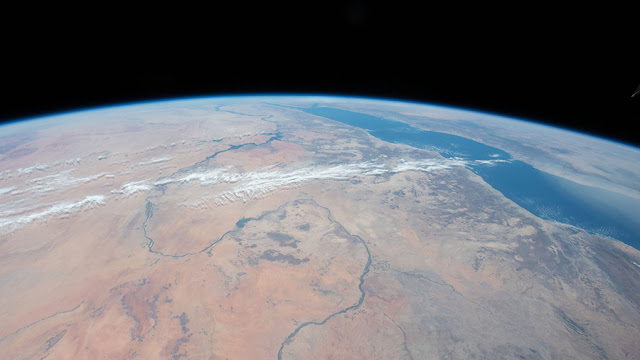
ARIANESPACE - Flight ST28 Mission poster / OneWeb 3 - Alexei Leonov Mission patch.
March 21, 2020
Soyuz-2.1b carrying 34 OneWeb satellites launch
For Arianespace’s ST28 mission, a Soyuz-2.1b launch vehicle launched another 34 OneWeb satellites from the Baikonur Cosmodrome in Kazakhstan, on 21 March 2020, at 17:06 UTC (22:06 local time). ST28 is Arianespace’s 28th Soyuz commercial mission from the Baikonur Cosmodrome and the third launch for the OneWeb constellation, orbiting satellites number 41 to 74. The satellites will be put into a near polar orbit at an altitude of 450 kilometers.
Today’s launch was the 51st Soyuz mission by Arianespace and Starsem, and the fourth successful flight in two months for the European launch services operator.
Soyuz-2.1b launches OneWeb 3
One month after its second launch for OneWeb, Arianespace continued the deployment for this global operator’s constellation by lofting 34 more satellites today, bringing the total to 74 satellites in orbit.
Today’s launch, Flight ST28, was the 28th Soyuz mission carried out by Arianespace and Starsem from Baikonur Cosmodrome in Kazakhstan. Performed on Saturday, March 21 at 10:06 p.m. local time at Baikonur Cosmodrome (17:06 UTC), Flight ST28 orbited 34 new OneWeb satellites – bringing the total in orbit to 74.
“I am very proud of the teams at Arianespace, Starsem and their partners here in Baikonur and also in French Guiana for having performed four successful launches within a 10-week period, including two on behalf of OneWeb,” said Stéphane Israël, Chief Executive Officer of Arianespace.
The first 40 satellites in the OneWeb constellation were orbited by Arianespace in two missions: the first six in February 2019 from the Guiana Space Center in Kourou, French Guiana; and the next 34 in February 2020 from Baikonur Cosmodrome.
OneWeb satellite
Satellite operator OneWeb aims to deliver high-speed internet through a next-generation satellite constellation that will be able to provide connectivity to everyone, everywhere. OneWeb’s system will be comprised of an initial 650 satellites and will provide global coverage in 2021.
The satellite prime contractor is OneWeb Satellites, a joint venture between OneWeb and Airbus Defence and Space. The satellites are built in Florida, USA and Toulouse, France on dedicated assembly lines.
Arianespace offers proven launch solutions, fully adapted to the requirements of constellations and validated by the market. Since the early 1990s, Arianespace has launched 155 satellites for commercial constellations: 74 for OneWeb, 56 for Globalstar, 20 for the O3b constellation, four for the company Planet and one for the Orbcomm network. In addition, it has lofted another 26 satellites for the Galileo navigation system on behalf of the European Space Agency (ESA) and the European Commission.
About Arianespace:
Arianespace uses space to make life better on Earth by providing launch services for all types of satellites into all orbits. It has orbited more than 650 satellites since 1980, using its family of three launchers, Ariane, Soyuz and Vega, from launch sites in French Guiana (South America) and Baikonur, Kazakhstan. Arianespace is headquartered in Evry, near Paris, and has a technical facility at the Guiana Space Center, Europe’s Spaceport in French Guiana, plus local offices in Washington, D.C., Tokyo and Singapore. Arianespace is a subsidiary of ArianeGroup, which holds 74% of its share capital, with the balance held by 15 other shareholders from the European launcher industry.
About Starsem:
Starsem markets and operates Soyuz launches from Baikonur for the international market. Its shareholders are Arianespace, ArianeGroup, the Russian space agency Roscosmos and the Samara Space Center (TsSKB-Progress).
Related articles:
Liftoff of Arianespace’s Soyuz mission with six OneWeb satellites
https://orbiterchspacenews.blogspot.com/2019/02/liftoff-of-arianespaces-soyuz-mission.html
Flight ST27 - Soyuz lifts off from Baikonur Cosmodrome
https://orbiterchspacenews.blogspot.com/2020/02/flight-st27-soyuz-lifts-off-from.html
Related links:
Arianespace: http://www.arianespace.com/
OneWeb website: http://www.oneweb.world/
OneWeb Satellites website: http://onewebsatellites.com/
Airbus Space website: https://www.airbus.com/space.html
Images, Video, Text, Credits: Arianespace/OneWeb/Roscosmos/SciNews.
Best regards, Orbiter.ch












































